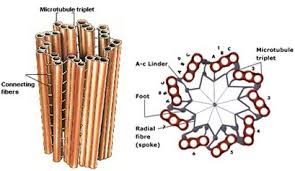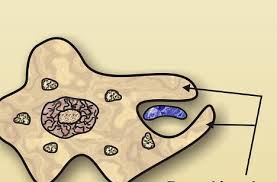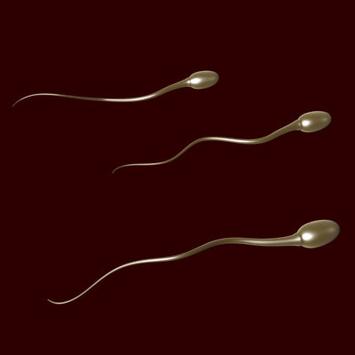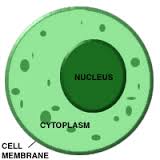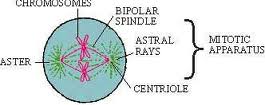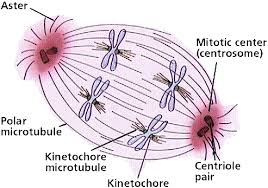Subgroups of Biology
•Anatomy(135)
•Botany(82, Subgroups: 9)
•Microbes(6)
•Zoology(27, Subgroups: 5)
•Botany(82, Subgroups: 9)
•Climbers(2)
•Creepers(9)
•Flowers(46)
•Fruits(53)
•Medicinal Plants(14)
•Plants(171)
•Spices(12)
•Tree(52)
•Vegetables(86)
•Medical Science(178, Subgroups: 3)•Creepers(9)
•Flowers(46)
•Fruits(53)
•Medicinal Plants(14)
•Plants(171)
•Spices(12)
•Tree(52)
•Vegetables(86)
•Microbes(6)
•Zoology(27, Subgroups: 5)
Items in Biology
1. Biology(Material Noun-Neuter) the fluid that circulates in the principal vascular system of human beings and other vertebrates, in humans consisting of plasma in which the red blood cells, white blood cells, and platelets are suspended মানুহ আৰু অন্য মেৰুদণ্ডী প্ৰাণীৰ শৰীৰৰ সঞ্চালন তন্ত্ৰৰ মাজেদি প্ৰৱাহিত জুলীয়া পদাৰ্থ; মানুহৰ ক্ষেত্ৰত ই প্লাজমাৰ দ্বাৰা গঠিত, য’ত লোহিত ৰক্ত কণিকা, শ্বেত ৰক্ত কণিকা আৰু অনুচক্ৰিকা বিলাক ওপঙি থাকে ৷
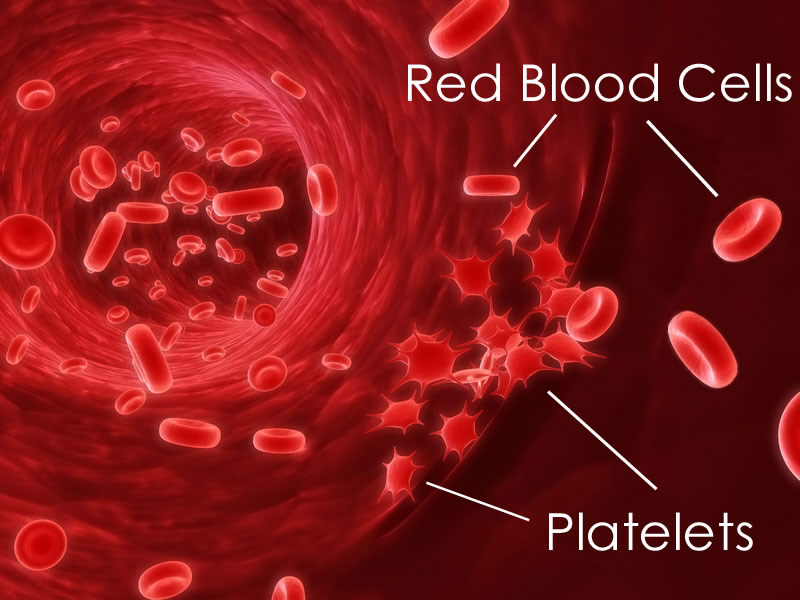
Assamese: অশ্ৰ, অসৃক, ওজঃ, তেজ, পলক্ষাৰ, শোণিত, ৰকত, ৰক্ত, ৰক্তক, ৰস্য, ৰুধিৰ, ৰোহিত,
Bodo: थै,
Mising: i:,
Khasi: ka jingïadei kur, ka snam, snam,
Garo: an.chi, ma.kring,
Meeteilon: I,
Bishnupriya Manipuri: রকত,
Karbi: ivi, vi,
Kok-Borok: thwih,
Hmar: thisen,
Nagamese: khun, tej,
Dimasa: bithih,
Tai: ল্যুট্,
Bangla: রক্ত,
Nepali: रगत,
Deori: চ্চি
Different POS:
a. Proper Adj.: bloodied, bloody, gory, তুম্ৰলি, লুতুৰি-পুতুৰি...b. Proper Adj.: bloody, কঁহকঁহীয়া, ডকডকীয়া, তেজাল, ৰক্তাক্ত...
Related Idea:
c. Abstract Noun: blood pressure, BP, ৰক্তচাপ...
2. Biology(Material Noun-Neuter) a solid, yellowish, nonglycerine substance allied to fats and oils, secreted by bees, plastic when warm and melting at about 145°F, variously employed in making candles, models, casts, ointments, etc., and used by bees in constructing their honeycomb. মৌ-মাখিয়ে মৌবাহত তৈয়াৰ কৰা এক হালধীয়া বৰণৰ তেলজাতীয় গোটা পদাৰ্থ, যাক ১৪৫ ডিগ্ৰী ফাৰেনহিট উষ্ণতাত গলাব পাৰি ৷
Assamese: মম্, মৌ সিতা,
Mising: mudkon,
Khasi: ka laha,
Garo: bija ste,
Meeteilon: khoiru,
Dimasa: bereshlai
3. BiologyChemistry(Verbal Noun) [Bacteriology, Immunology] the specific cellular response to foreign matter, as in testing for allergies.
[Chemistry] the reciprocal action of chemical agents upon each other; chemical change. (বেক্টেৰিয়া-বিজ্ঞান, ৰোগ-প্ৰতিৰোধ বিজ্ঞান) বহিঃপদাৰ্থৰ প্ৰৱেশ ঘটিলে শৰীৰৰ প্ৰতিৰোধী কোষসমূহে দিয়া সমিধান, যেনেঃ এলাৰ্জীৰ পৰীক্ষা
(ৰসায়ন বিজ্ঞান) ৰাসায়নিক পদাৰ্থসমূহৰ মাজত পাৰস্পৰিক ক্ৰিয়া; ৰাসায়নিক পৰিৱৰ্ত্তন
4. Biology(Verbal Noun) Production of further members of the same species একে প্ৰজাতিৰ অধিক সদস্য উত্পাদন বা সৃষ্টি কৰা
Assamese: প্ৰজনন, বিজনন,
Khasi: ka jingkha
Related Idea:
a. Verb-Intran.: beget, breed, father, sire, spawn...
5. Biology(Common Noun-Common) one with all full grown body parts দেহৰ সকলো অঙ্গ পূৰাকৈ বিকশিত হোৱা লোক
Assamese: নেকেৰা, পূৰ্ণাংগ, প্ৰাপ্তবয়স্ক, সাবালক,
Garo: bilsi chu.sokgimin,
Dimasa: krao
Antonyms:
a. Proper Noun-Common &/or Masculine: minor, অকুমাৰ, অপ্ৰাপ্তবয়স্ক, নাবালক, नाबालक...
6. Biology(Material Noun-Neuter) Any of various soft, solid, or semisolid organic compounds constituting the esters of glycerol and fatty acids and their associated organic groups গ্লিছাৰলৰ ইষ্টাৰ আৰু ফেটি এছিদ, আৰু ইহঁতৰ লগত জড়িত জৈৱিক গোটেৰে গঠিত কোমল, কঠিন বা অৰ্দ্ধ-কঠিন জৈৱিক পদাৰ্থ
Assamese: চৰ্বি, মেদ, সুদোল, স্নেহ পদাৰ্থ,
Bodo: मेजेम,
Karbi: athu,
Nagamese: tel,
Dimasa: buphlam,
Bangla: চৰ্বি,
Deori: তু
Related Idea:
a. Proper Adj.-Common: corpulent, fat, obese, portly, গদহা...
7. Biology(Common Noun-Neuter) a specialized part of a cell having some specific function এটা কোষৰ একোটা বিশেষ অংশ, যি কোনো নিৰ্দ্দিষ্ট কাৰ্য্য সম্পন্ন কৰে
8. Biology(Material Noun-Neuter) Any of a group of organic compounds that includes sugars, starches, celluloses, and gums and serves as a major energy source in the diet of animals. চেনি, ষ্টাৰ্চ, চেলুল’জ আদিৰ দৰে এক প্ৰকাৰ জৈৱিক পদাৰ্থ, যি প্ৰাণীৰ আহাৰত থকা প্ৰধান শক্তিৰ উৎস।
Assamese: অন্নসাৰ, মাৰ, শ্বেতসাৰ, শৰ্কৰা,
Bodo: गाहाय मिरु बाहागो, मायदि होनाय, मार, सियाव होनाय मायदि, सियाव होनाय मार
9. Biology(Material Noun-Neuter) The thin yellowish fluid secreted by the mammary glands at the time of parturition that is rich in antibodies and minerals, and precedes the production of true milk. জন্তুৰ পোৱালি জগা মাত্ৰেই খীৰোৱা অলপ হালধীয়া গাখীৰ৷
10. Biology(Common Noun-Common) A cold-blooded vertebrate of the class Reptilia, comprising the turtles, snakes, lizards, crocodilians etc মাটিত পেট চোচৰাই খোজ কঢ়া বা আগবঢ়া, ঠাণ্ডা তেজৰ জীৱ৷
11. Biology(Material Noun-Neuter) Thin covering that protects the contents of a biological cell জীৱকোষৰ ভিতৰৰ উপাদান সমূহক আৱৰি ৰখা পাতল আৱৰণ
12. Biology(Abstract Noun) the technique of cultivating living tissue in a prepared medium outside the body জীৱদেহৰ বাহিৰত কোনো কৃত্ৰিম ভাৱে প্ৰস্তুত মাধ্যমত জীৱিত কলাৰ বৃদ্ধি ঘটোৱা প্ৰক্ৰিয়া
13. BiologyChemistry(Material Noun-Neuter) any of various proteins, as pepsin, originating from living cells and capable of producing certain chemical changes in organic substances by catalytic action, as in digestion. যি জৈৱিক পদাৰ্থই কোনো জৈৱ-বিক্ৰিয়াক, যেনে পচন ক্ৰিয়া, সহায় কৰে
Assamese: উৎসেচক, পাচক ৰস,
Hindi: किण्वक
Related Idea:
a. Material Noun-Neuter: agent, catalyst, অনুঘটক, थान्दै, आवेजक...
14. Biology(Material Noun-Neuter) microscopic cavities like those found in animal bodies
Assamese: ছিদ্ৰ, লোমকূপ, ৰন্ধ্ৰ,
Bodo: गोथौवै फराय, गोसोहोना नाय,
Khasi: bishar
Higher Magnitude:
a. Material Noun-Neuter: aperture, cavity, chink, hole, nick...Super Idea:
b. Material Noun-Neuter: aperture, cavity, chink, hole, nick...
15. Biology(Proper Adj.-Neuter) having similar structure due to genetic similarity একে উৎসৰ পৰা বিবৰ্ত্তিত হোৱা হেতুকে অনুৰূপ গাঁঠনিবিশিষ্ট
16. Biology(Material Noun-Neuter) a narrow pipe-like ulcer, a narrow passage created by disease এটা নলী-সদৃশ ঘা; বেমাৰৰ ফলত সৃষ্টি হোৱা এটা ঠেক নলী
17. Biology(Material Noun-Neuter) an unborn or unhatched vetebrate গৰ্ভস্থ, নোপজা বা নজগা মেৰুদণ্ডী প্ৰাণী
Assamese: কলল, ভ্ৰূণ,
Bodo: भ्रन
Different POS:
a. Proper Adj.-Common &/or Masculine: fetal, ভ্ৰুণীয়...Related Idea:
b. Abstract Noun: abortion, feticide, foeticide, miscarriage, গৰ্ভ-নাশ...
18. Biology(Abstract Noun-Neuter) Filament forming tissue পেশী তৈয়াৰ হোৱা সুক্ষ্ম কলাসমূহ৷
19. Biology(Proper Adj.-Neuter) Of or like a hair, esp. a tube of very small diameter, like capillary blood vessels চুলিৰ আকাৰৰ সৰু নলী৷
20. Biology(Abstract Noun-Neuter) It is a large Y-shaped protein used by the immune system of the body to identify and neutralize foreign objects like bacteria and viruses
21. Biology(Abstract Noun-Neuter) Outermost layer of the skin ছালৰ আটাইতকৈ বাহিৰৰ তৰপ
Assamese: অধিচৰ্ম, মাখিছাল
Related Idea:
a. Abstract Noun-Neuter: dermis, নিচৰ্ম...
22. Biology(Abstract Noun-Neuter) Layer of living tissue below the epidermis ছালৰ একেবাৰে বাহিৰৰ তৰপটো, অৰ্থাত্ অধিচৰ্মৰ তলতে থকা জীৱিত কলাৰ আৱৰণ
Assamese: নিচৰ্ম
Related Idea:
a. Material Noun-Neuter: skin, চবৰি, চাম, চৰ্ম, ছাল...b. Abstract Noun-Neuter: epidermis, অধিচৰ্ম, মাখিছাল...
23. Biology(Abstract Noun-Neuter) All the chemical processes in a living organism producing energy and growth জীৱদেহত সংহতীত হোৱা ৰাসাসনিক প্ৰক্ৰিয়াসমূহ
24. Biology(Abstract Noun-Neuter) Slender leafless shoot by which some climbing plants cling লতাৰ সৰ্পিল আগ
25. Biology(Abstract Noun-Neuter) a small bulb or bulblike structure, esp. one growing in the axils of leaves, as in the tiger lily, or replacing flowers, as in the onion. পিঁয়াজ বা আলুৰ দেহত গজা চকু য’ৰ পৰা নতুন গছ গজে
Assamese: প্ৰজনন কন্দিকা
Related Idea:
a. Material Noun-Neuter: bulb, tuber, কন্দ, টেপু, পেতা...
26. Biology(Abstract Noun-Neuter) The process of evaporation of water from aerial parts of plants, especially leaves but also stems, flowers and fruits. Transpiration is a side effect of the plant needing to open its stomata in order to obtain carbon dioxide gas from the air for photosynthesis.
27. Biology(Abstract Noun-Neuter) Cutting tooth, esp. at the front of the mouth
Assamese: আগদাঁত, কৃন্তক দাঁত,
Bodo: खदाल हाथाय, सिगांनि हाथाय,
Mising: i:teng,
Karbi: somunphrang,
Apatani: hipya
28. Biology(Material Noun-Neuter) Bitter digestive fluid secreted by the liver যকৃতে সৃষ্টি কৰা তিতা পাচন ৰস
29. Biology(Proper Adj.-Common) of the nature of or assured by a contract or agreement. চুক্তি-পত্ৰৰ ভিত্তিত বা আধাৰত হোৱা।
Assamese: গিৰ্মিটীয়া
Different POS:
a. Abstract Noun: contract, ঠিকা, ঠিকাকাম, रादाय, thika...
30. Biology(Abstract Noun) It is fusion of gametes to form a new organism of the same species. In animals, the process involves a sperm fusing with an ovum, which eventually leads to the development of an embryo. সুক্ৰাণু আৰু ডিম্বাণুৰ মিলন৷
Assamese: গৰ্ভসঞ্চাৰ, নিষিক্তকৰণ, নিষেচন
Different POS:
a. Abstract Noun: fertility, উৰ্ব্বৰতা...
31. Biology(Verb-Trans.) To cause a fusion of gametes to form a new organism of the same species. In animals, the process involves a sperm fusing with an ovum, which eventually leads to the development of an embryo. পুং আৰু স্ত্ৰী যৌন কোষৰ মিলন হ
32. Biology(Abstract Noun-Neuter) Any of a group of organic compounds of one or more chains of amino acids and forming an essential part of all living organisms
33. Biology(Material Noun-Neuter) A growth of tissue at the back of the nose নাকৰ পাছফালে থকা এক বিশেষ কলা
34. Biology(Material Noun-Neuter) Slimy substance secreted by mucous membrane in the body. শৰীৰৰ বিভিন্ন গহ্বৰ, যেনেঃ মুখ-গহ্বৰ আদিৰ পাতল আৱৰণৰ পৰা নিৰ্গত বিজলুৱা পদাৰ্থ।
Assamese: আম, শাওঁ, শ্লেষ্মা,
Mising: nyopsi,
Karbi: naap,
Dimasa: gahadi
Sub Idea:
a. Material Noun-Neuter: rheum, snot, শিয়ান, শেঙুন, गुंग्राइ...
35. Biology(Verbal Noun) The act of warming eggs in order to hatch them, as by a bird sitting upon a clutch of eggs in a nest. চৰাইয়ে কণীৰ ওপৰত পৰি তাপ দিয়া কাৰ্য ৷
Assamese: উমনি, উষ্মায়ন,
Bodo: दाउदै दैनाय,
Deori: দুজাঁ-কুঁমা
Different POS:
a. Verb-Trans.: brood, incubate, উমনি দে, উমনি ল, উমনিত বহ্...
36. Biology(Abstract Noun) An organism that grows, feeds, and is sheltered on or in a different organism while contributing nothing to the survival of its host.
আন উদ্ভিদ বা জীৱৰ পৰা খাদ্য গ্ৰহণ কৰি জীয়াই থকা উদ্ভিদ বা জীৱ৷
37. Biology(Common Noun-Neuter) a field of education comprising especially of domestic skill oriented courses offering inputs in housekeeping, home decoration, cookery, food and nutrition, child development, stitching etc. শিক্ষাৰ এটা বিভাগ, য’ত বিশেষকৈ ঘৰ-চলোৱা, ঘৰ-সজোৱা, ৰন্ধন, খাদ্য আৰু পৰিপুষ্টি, শিশুৰ বিকাশ, চিলাই আদি নানান ঘৰুৱা প্ৰয়োজনীয় বিষয়ৰ জ্ঞান দিয়া হয়৷
38. Biology(Verbal Adj.) (food) converted to substances suitable for incorporation into the body and its tissue. জীণ যোৱা অৰ্থাত্ শৰীৰ আৰু কলাত মিলি যাব পৰাকৈ ৰূপান্তৰ কৰা (খাদ্য)।
39. Biology(Abstract Noun) a theory that the various types of animals and plants have their origin in other preexisting types and that the distinguishable differences are due to modifications in successive generations. এটা আদি কাৰণ বা পাৰ্থিৱ কোনো ৰূপৰ পৰা সকলো প্ৰাণী আৰু উদ্ভিদৰ সৃষ্টি হৈছে আৰু সিহঁতৰ মাজত থকা বৈসাদৃশ্যসমূহ পৰৱৰ্ত্তী প্ৰজন্ম সমূহত ঘটা নানা পৰিৱৰ্ত্তনৰ মাজেদি বিকশিত হৈছে, এই মত।
40. Biology(Material Noun-Neuter) a small, cylindrical cell organelle, seen near the nucleus in the cytoplasm of most eukaryotic cells, that divides in perpendicular fashion during mitosis, the new pair of centrioles moving ahead of the spindle to opposite poles of the cell as the cell divides. কোষকেন্দ্ৰৰ নিচেই কাষত বা গাতে লাগি থকা এযোৰ অতি ক্ষুদ্ৰ অংগিকা, যি কোষ বিভাজনত সহায় কৰে আৰু য’ৰ পৰা কেন্দ্ৰীয় মহুৰাৰ সৃষ্টি হৈ অপত্য কোষলৈ ক্ৰমজ’মৰ সমবিতৰণ ঘটে ৷
41. Biology(Material Noun-Neuter) the diffuse intermeshed granular threads that represent the chromosomes in the resting nucleus ক্ৰমেটিনেৰে তৈয়াৰী পাক-খোৱা সূতাৰে গঠিত এক জালিকা সদৃশ গঠন, যি কোষকেন্দ্ৰৰ জিৰণিৰ অৱস্থাত ক্ৰমজ’মক প্ৰতিনিধিত্ব কৰে ৷
42. BiologyInsect-Worm(Material Noun-Neuter) a temporary protrusion or retractile process of the cytoplasm of a cell (as a unicellular organism or a white blood cell of a higher organism) that functions especially as an organ of locomotion or in taking up food. (কেতবোৰ এককোষী প্ৰাণী অথবা উচ্চবৰ্গৰ প্ৰাণীৰ শ্বেত ৰক্ত কণিকাৰ) কোষ প্ৰৰসৰ অস্থায়ী প্ৰসাৰণৰ ফলত সৃষ্টি হোৱা অংশ, যি চলন অথবা খাদ্য আহৰণৰ বাবে ব্যৱহৃত হয়৷
43. Biology(Material Noun-Neuter) a long, lashlike appendage serving as an organ of locomotion in protozoa, bacteria, sperm cells, etc. এককোষী প্ৰাণী, বেক্টেৰিয়া, শুক্ৰাণু আদিৰ চলনাংগ ৰূপে ব্যৱহৃত দীঘল, সূতাৰ দৰে প্ৰসাৰিত অংশ।
44. Biology(Material Noun-Neuter) microscopic hairlike processes extending from the surface of a cell or unicellular organism, capable of rhythmical motion, and acting with other such structures to cause the movement of the cell or of the surrounding medium এককোষী জীৱ বা কোষৰ উপৰিপৃষ্ঠৰ পৰা প্ৰসাৰিত চুলি সদৃশ গঠন, যি সন্তুলিত সঞ্চালনৰ জৰিয়তে কোষৰ অথবা চৌপাশৰ মাধযমৰ চলনত সহায় কৰে ৷
45. Biology(Abstract Noun) modification of different parts of the body for performance of particular functions; specialization of parts or organs in the course of evolution দেহৰ বিভিন্ন অংশ নিৰ্দ্দিষ্ট কাম কৰাৰ উপযোগী হোৱাকৈ ৰূপান্তৰ ঘটা প্ৰক্ৰিয়া
46. Biology(Material Noun-Neuter) the bud of the ascending axis of a plant while still in the embryo উদ্ভিদৰ ভ্ৰূণৰ যিটো অংশৰ পৰা পাছলৈ কাণ্ডৰ সৃষ্টি হয়
47. Biology(Material Noun-Neuter) an organelle, consisting of layers of flattened sacs, that takes up and processes secretory and synthetic products from the endoplasmic reticulum and then either releases the finished products into various parts of the cell cytoplasm or secretes them to the outside of the cell পাতল, মিহি আৱৰণযুক্ত আৰু সমান্তৰালভাৱে এটাৰ ওপৰত আন এটাকৈ সজ্জিত কেতবোৰ নলীকা অথবা থালৰ নিচিনা মোনাৰে গঠিত অংগিকা, যি কোষৰ কেতবোৰ নিঃসৰণীয় দ্ৰব্য সাঁচি ৰাখে আৰু নিঃসৰণ কৰে ৷
48. Biology(Material Noun-Neuter) any of the small colourless bodies occurring in the cytoplasm of plant cells and used for storing food material, esp starch ঘাইকৈ মাটিৰ তলত থকা শিপা আৰু মৃদগত কাণ্ডৰ কোষ, আৰু কাণ্ডৰ সঞ্চয় কলাত থকা শেঁতা বৰণৰ এবিধ কণা, য’ত শ্বেতসাৰ সঞ্চিত হৈ থাকে ৷
49. Biology(Abstract Noun) the fertilization that occurs when male sperm meets the female egg(s) internally in her body স্ত্ৰী-প্ৰাণীৰ শৰীৰৰ ভিতৰত ডিম্বাণুৰ সৈতে শুক্ৰাণু মিলিত হৈ ঘটা নিষেচন
50. Biology(Material Noun-Neuter) the double membrane surrounding the nucleus within a cell কোষৰ ভিতৰত থকা কোষকেন্দ্ৰটোক আৱৰি থকা দুতৰপীয়া আৱৰণ
51. Biology(Material Noun-Neuter) a network of tubular membranes within the cytoplasm of the cell, occurring either with a smooth surface (smooth endoplasmic reticulum) or studded with ribosomes (rough endoplasmic reticulum), involved in the transport of materials কোষৰ কোষপ্ৰৰসত থকা ক্ষুদ্ৰ ক্ষুদ্ৰ নলিকাৰে গঠিত এক জালিকাসদৃশ গঠন
52. Biology(Material Noun-Neuter) a membrane-bound cavity within a cell, often containing a watery liquid or secretion কোষ এটাৰ ভিতৰত থকা আৱৰণ-যুক্ত মোনা, য’ত সাধাৰণতে জুলীয়া পদাৰ্থ জমা হৈ থাকে
53. Biology(Material Noun-Neuter) the cell substance between the cell membrane and the nucleus. কোষকেন্দ্ৰক বাদ দি কোষৰ প্ৰ’ট’প্লাজমৰ বাকী পদাৰ্থখিনি।
54. Biology(Material Noun-Neuter) the definite boundary or wall that is part of the outer structure of certain cells, as a plant cell কেতবোৰ কোষ, যেনেঃ উদ্ভিদ কোষৰ বহিঃসীমাৰ সুস্পষ্ট আৱৰণ
55. Biology(Proper Adj.-Common) of or pertaining to any cellular organism that has no nuclear membrane, no organelles in the cytoplasm except ribosomes সুস্পষ্ট কোষকেন্দ্ৰ আৰু কেন্দ্ৰাৱৰণ নথকা আৰু ৰাইব’জ’মৰ বাহিৰে আন কোষ অংগিকা ধাৰণ নকৰা যিকোনো জীৱৰ বা তেনে জীৱ সম্পৰ্কীয়
56. Biology(Proper Adj.-Common) of or pertaining to any organism having as its fundamental structural unit a cell type that contains specialized organelles in the cytoplasm, a membrane-bound nucleus enclosing genetic material organized into chromosomes, and an elaborate system of division by mitosis or meiosis, characteristic of all life forms except bacteria, blue-green algae, and other primitive microorganisms সুস্পষ্ট আৱৰণযুক্ত কোষকেন্দ্ৰ আৰু কোষপ্ৰৰসত সুনিৰ্দ্দিষ্ট কোষ অংগিকা থকা, অধিকাংশ উচ্চখাপৰ উদ্ভিদ আৰু প্ৰাণীকোষৰ চৰিত্ৰ বিশিষ্ট যিকোনো জীৱৰ বা জীৱ সম্পৰ্কীয়
57. BiologyPhysics(Common Noun-Neuter) a specialized, usually spherical mass of protoplasm encased in a double membrane, and found in most living eukaryotic cells; the very dense region containing protons and neutrons in an atom
দুতৰপীয়া আৱৰণেৰে আগুৰা, সাধাৰণতে গোলাকৃতিৰ আৰু অধিকাংশ সংকোষকেন্দ্ৰীয় জীৱকোষত থকা প্ৰ’ট’প্লাজমৰ এক সমষ্টি
58. Biology(Abstract Noun) asexual reproduction in unicellular organisms by division into two daughter cells এককোষী জীৱৰ অযৌন প্ৰজনন, য’ত এটা কোষ দুটা অপত্য কোষলৈ বিভাজিত হয়
59. Biology(Material Noun-Neuter) a mass of undifferentiated cells produced as the first stage in tissue culture কলা কৰ্ষণৰ প্ৰথম অৱস্থাত উৎপাদিত বিভেদন নোহোৱা কোষৰ থূপ
60. Biology(Abstract Noun) the fertilization that occurs with the union of the male sperm and female egg outside of the body শৰীৰৰ বাহিৰত শুক্ৰাণু আৰু ডিম্বাণু মিলিত হৈ ঘটা নিষেচন
61. Biology(Abstract Noun) the restoration or new growth by an organism of organs, tissues, etc., that have been lost, removed, or injured জীৱদেহৰ কোনো অংগ, কলা আদি আঘাত-প্ৰাপ্ত হোৱা, আঁতৰ কৰা বা হেৰুৱাৰ পাছত পুনৰ গঠিত হোৱা অথবা নতুনকৈ বাঢ়ি অহা প্ৰক্ৰিয়া
62. Biology(Material Noun-Neuter) the cell produced by the union of two gametes, before it undergoes cleavage. দুটা জননকোষৰ মিলন হৈ সৃষ্টি হোৱা কোষ, বিভাজনৰ আগেয়ে|
63. Biology(Material Noun-Neuter) a mature sexual reproductive cell, as a sperm or egg, that unites with another cell to form a new organism এক পৈণত যৌন প্ৰজনন কোষ, যেনেঃ শুক্ৰকোষ বা ডিম্বকোষ, যি পৰস্পৰ মিলিত হৈ নতুন জীৱৰ সৃষ্টি কৰে
64. Biology(Common Noun-Neuter) an essential nutrient, as a trace mineral or vitamin, that is required by an organism in minute amounts জীৱৰ পৰিপুষ্টিৰ বাবে অতি ক্ষুদ্ৰ পৰিমাণত প্ৰয়োজনীয় পুষ্টিদ্ৰব্য বা আহাৰৰ উপাদান, যেনেঃ খনিজ দ্ৰব্য বা ভিটামিন
65. Biology(Proper Adj.-Neuter) of or characterized by the absence of life or living organisms জীৱন অথবা জীৱৰ অনুপস্থিতি বুজোৱা
66. Biology(Proper Adj.-Neuter) of or pertaining to ecology, i.e. the relationship between organisms and their environments পৰিস্থিতি বা পাৰিপাৰ্শ্বিকতা সম্বন্ধীয়, অৰ্থাৎ জীৱ আৰু ইহঁতৰ চাৰিওফালৰ পৰিৱেশৰ মাজৰ সম্পৰ্ক সম্বন্ধীয়
67. Biology(Common Noun-Neuter) the primary subdivision of a taxonomic kingdom, grouping together all classes of organisms that have the same body plan একে শাৰীৰিক বৈশিষ্ট্য সম্পন্ন সকলো বৰ্গ অন্তৰ্ভুক্ত কৰা জীৱজগতৰ প্ৰধান ভাগ দুটাৰ (প্ৰাণীজগত আৰু উদ্ভিদজগত) প্ৰাথমিক উপভাগ
68. Biology(Common Noun-Neuter) the usual major subdivision of a class or subclass in the classification of organisms, consisting of several families জীৱৰ শ্ৰেণীবিভাজনত এটা শ্ৰেণী বা উপশ্ৰেণীৰ অন্তৰ্গত প্ৰধান বিভাগ, যি একাধিক গোত্ৰৰে গঠিত
69. Biology(Proper Noun-Neuter) a system of nomenclature in which each species is given a unique name that consists of a generic and a specific term. জীৱৰ নামকৰণৰ এক পদ্ধতি, য’ত প্ৰতিটো প্ৰজাতিক এক বিশিষ্ট নামেৰে জনা যায়, যি ক্ৰমে গণ আৰু প্ৰজাতি সূচোৱা শব্দেৰে গঠিত।
70. Biology(Proper Adj.-Common) any organism capable of self-nourishment by using inorganic materials as a source of nutrients and using photosynthesis or chemosynthesis as a source of energy, as most plants and certain bacteria and protists কোনো অজৈৱ পদাৰ্থক পৰিপুষ্টিৰ উৎস ৰূপে ব্যৱহাৰ কৰি নিজৰ পুষ্টি সাধন কৰিব পৰা জীৱ, যেনেঃ সৰহভাগ উদ্ভিদ আৰু কেতবোৰ বেক্টেৰিয়া
71. Biology(Proper Adj.-Common) capable of utilizing only organic materials as a source of food খাদ্য বা পৰিপুষ্টিৰ উৎস ৰূপে কেৱল জৈৱিক পদাৰ্থহে ব্যৱহাৰ কৰিব পৰা (জীৱ)
72. Biology(Common Noun-Neuter) an organism, usually a bacterium or fungus, that breaks down the cells of dead plants and animals into simpler substances বেক্টেৰিয়া বা ভেঁকুৰৰ দৰে জীৱ, যি মৃত উদ্ভিদ আৰু প্ৰাণীদেহৰ কোষসমূহ ভাঙি সৰল পদাৰ্থলৈ ৰূপান্তৰ কৰিব পাৰে
73. Biology(Abstract Noun) the existence of an organism in several form or color varieties এটা জীৱ ভিন ভিন ৰূপ বা বৰণত উপলভ্য হোৱা
74. Biology(Common Noun-Common) the usual major subdivision of an order or suborder in the classification of plants, animals, fungi, etc., usually consisting of several genera উদ্ভিদ, প্ৰাণী আদিৰ বৰ্গীকৰণত এক বৰ্গ বা উপবৰ্গৰ প্ৰধান উপবিভাগ, যি সাধাৰণতে বহুতো গণৰ সমষ্টি
75. Biology(Verbal Adj.) relating to or performing secretion, i.e. the act or process of separating, elaborating, and releasing a substance নিঃসৰণ অৰ্থাৎ কোনো দ্ৰব্য বাহিৰ কৰা বা বাহিৰলৈ এৰি দিয়া কাৰ্য্য বা প্ৰক্ৰিয়াৰ সৈতে জড়িত
76. Biology(Material Noun-Neuter) the intercellular substance of a tissue জীৱদেহৰ কোনো কলাৰ আন্তঃকোষীয় দ্ৰব্য
77. Biology(Verbal Noun) the production of exact copies of complex molecules, such as DNA molecules, that occurs during growth of living organisms জীৱৰ সংবৰ্দ্ধনৰ সময়ত DNA আদি জটিল অণুৰ সম্পূৰ্ণ সদৃশ অণু উৎপাদন কৰা প্ৰক্ৰিয়া
78. Biology(Proper Adj.-Neuter) situated between or among cells দুই বা ততোধিক কোষৰ মাজত অৱস্থিত
79. Biology(Material Noun-Neuter) an extremely fine fibril or filament. জীৱদেহত থকা অতি মিহি সূতাৰ দৰে বস্তু।
80. Biology(Material Noun-Neuter) any threadlike structure or filament যিকোনো মিহি সূতাৰ দৰে বস্তু, অৰ্থাৎ মিহি তন্তু
81. Biology(Proper Adj.-Neuter) situated or occurring inside a cell or cells এক বা একাধিক কোষৰ ভিতৰত অৱস্থিত বা সংঘটিত
82. Biology(Verbal Adj.) arising in response to the action of the environment on the organism জীৱৰ ওপৰত পাৰিপাৰ্শ্বিকতাৰ প্ৰভাৱৰ ফল স্বৰূপে উদ্ভৱ হোৱা
83. Biology(Verbal Adj.) of or pertaining to physiology; consistent with the normal functioning of an organism শৰীৰতত্ব সম্বন্ধীয়; জীৱৰ স্বাভাৱিক কৰ্মপ্ৰক্ৰিয়া অনুসাৰে হোৱা
84. Biology(Proper Adj.-Neuter) of or pertaining to any chromosome or chromatid whose centromere is located not exactly at centre but near the centre এনে ক্ৰমজ’ম বা ক্ৰমেটিড সম্বন্ধীয়, য’ত ছেণ্ট্ৰ’মিয়েৰ সম্পূৰ্ণ মাজত অৱস্থিত নহৈ মধ্যবিন্দুৰ পৰা সামান্য আঁতৰত থাকে
85. Biology(Proper Adj.-Neuter) of or pertaining to any chromosome or chromatid whose centromere is closer to one end than to the other, creating two unequal chromosome arms এনে ক্ৰমজ’ম বা ক্ৰমেটিড সম্বন্ধীয়, য’ত ছেণ্ট্ৰ’মিয়েৰটো এটা মূৰতকৈ আনটো মূৰৰ অধিক ওচৰত অৱস্থিত হৈ ক্ৰমজ’মডালক অসমান দুটা ভাগত ভাগ কৰে
86. Biology(Common Noun-Neuter) a thin, extracellular membrane underlying epithelial tissue. অধিচ্ছদীয় কলাৰ তলত থকা এক পাতল বহিঃকোষীয় আৱৰণ।
87. Biology(Abstract Noun) a method of cell division, in which the nucleus divides into daughter nuclei, each containing the same number of chromosomes as the parent nucleus কোষ বিভাজনৰ এক পদ্ধতি, য’ত কোষকেন্দ্ৰটো মাতৃকোষৰ সৈতে একে সমান সংখ্যক ক্ৰমজ’ম থকা দুটা অপত্য কোষকেন্দ্ৰলৈ বিভাজিত হয়
88. Biology(Abstract Noun) the direct method of cell division, characterized by simple cleavage of the nucleus without the formation of chromosomes কোষৰ প্ৰত্যক্ষ বিভাজন, য’ত ক্ৰমজ’মৰ সৃষ্টি নোহোৱাকৈ কোষকেন্দ্ৰটো সৰলভাৱে দুভাগত বিভক্ত হয়
89. Biology(Proper Adj.-Neuter) of or pertaining to any chromosome or chromatid whose centromere is positioned at its end, creating one chromosome arm এনে ক্ৰমজ’ম বা ক্ৰমেটিড সম্বন্ধীয়, য’ত ছেণ্ট্ৰ’মিয়েৰটো এটা মূৰত অৱস্থিত
90. Biology(Proper Adj.-Neuter) of or pertaining to any chromosome or chromatid whose centromere is centrally located, creating two apparently equal chromosome arms এনে ক্ৰমজ’ম বা ক্ৰমেটিড সম্বন্ধীয়, য’ত ছেণ্ট্ৰ’মিয়েৰ মাজত অৱস্থিত হৈ ক্ৰমজ’মডালক সমানে দুভাগ কৰে
91. Biology(Abstract Noun) a type of cell division in which a nucleus divides into four daughter nuclei, each containing half the chromosome number of the parent nucleus এক প্ৰকাৰৰ কোষ বিভাজন, য’ত এটা কোষকেন্দ্ৰ মাতৃকোষৰ আধা সংখ্যক ক্ৰমজ’ম বিশিষ্ট চাৰিটা অপত্য কোষকেন্দ্ৰলৈ বিভাজিত হয়
92. Biology(Abstract Noun) the first stage of mitosis or meiosis in eukaryotic cell division, during which the nuclear envelope breaks down and strands of chromatin form into chromosomes দৈহিক বা হ্ৰাসাত্মক কোষ বিভাজনৰ প্ৰথম পৰ্য্যায়, য’ত কোষকেন্দ্ৰীয় আৱৰণ ভাগি যায় আৰু ক্ৰমেটিন সূত্ৰবোৰে ক্ৰমজ’ম গঠন কৰে
93. Biology(Abstract Noun) the stage in mitosis or meiosis in which the duplicated chromosomes line up along the equatorial plate of the spindle দৈহিক বা হ্ৰাসাত্মক কোষ বিভাজনৰ যিটো স্তৰত মহুৰাৰ বিষুৱীয় সমতলত ক্ৰমজ’মবিলাকে স্থিতি লয়
94. Biology(Abstract Noun) the stage in mitosis or meiosis following metaphase in which the daughter chromosomes move away from each other to opposite ends of the cell দৈহিক আৰু হ্ৰাসাত্মক কোষ বিভাজনৰ মধ্যস্তৰৰ পৰৱৰ্ত্তী স্তৰ, য’ত অপত্য ক্ৰমজ’মবিলাকে পৰস্পৰ আঁতৰি গৈ কোষটোৰ দুই প্ৰান্তৰ ফালে গতি কৰে
95. Biology(Abstract Noun) the final stage of meiosis or mitosis, in which the separated chromosomes reach the opposite poles of the dividing cell and the nuclei of the daughter cells form around the two sets of chromosomes দৈহিক বা হ্ৰাসাত্মক কোষ বিভাজনৰ অন্তিম স্তৰ, য’ত বিভাজিত ক্ৰমজ’মবিলাক গৈ কোষৰ দুই বিপৰীত প্ৰান্ত পায় আৰু ক্ৰমজ’মৰ দুই গোটক আৱৰি অপত্য কোষৰ কোষকেন্দ্ৰ কেইটা গঠন হয়
96. Biology(Material Noun-Neuter) one of the thin fibrils that make up the mitotic or meiotic aster দৈহিক বা হ্ৰাসাত্মক কোষ বিভাজনৰ সময়ত তাৰকাৰ সৃষ্টি কৰা মিহি তন্তু
97. Biology(Material Noun-Neuter) a system of gelated cytoplasmic rays arranged radially about a centriole at either end of the mitotic or meiotic spindle. দৈহিক বা হ্ৰাসাত্মক কোষ বিভাজনৰ সময়ত গঠন হোৱা মহুৰাৰ উভয় প্ৰান্তত ছেণ্ট্ৰিয়’লৰ পৰা বিকীৰ্ণভাৱে সজ্জিত কোষপ্ৰৰসীয় ৰশ্মিয়ে সৃষ্টি কৰা এক আকৃতি।
98. Biology(Material Noun-Neuter) a hollow cylindrical structure in the cytoplasm of most cells, involved in intracellular shape and transport. অন্তৰ্কোষীয় আকৃতি আৰু পৰিবহনৰ সৈতে জড়িত, প্ৰায়বোৰ কোষৰ কোষপ্ৰৰসত থকা ফোপোলা চুঙাকৃতিৰ গঠন।
99. Biology(Material Noun-Neuter) a plate that develops at the midpoint between the two groups of chromosomes in a dividing cell and that is involved in forming the wall between the two new daughter cells উদ্ভিদৰ কোষ বিভাজনৰ সময়ত অপত্য কোষকেন্দ্ৰ দুটাৰ সোঁমাজত গঠিত হোৱা এক পৰ্দা বা বেৰ
100. Biology(Proper Adj.-Neuter) noting the parts of a plant not specialized for reproduction উদ্ভিদৰ প্ৰজননৰ সৈতে জড়িত নোহোৱা অংশ সম্বন্ধীয়
101. Biology(Common Noun-Neuter) related to an organism or cell having only one complete set of chromosomes, ordinarily half the normal diploid number স্বাভাৱিক দ্বৈধ সংখ্যাৰ আধা সংখ্যক ক্ৰমজ’মৰ মাত্ৰ এটা গোট বিশিষ্ট এক জীৱ বা কোষ সম্বন্ধীয়
102. Biology(Verbal Noun) To cut open and examine the structure of (a dead animal or plant). কোনো গছ-গছনি বা মৃত জন্তু সুক্ষ্মভাৱে পৰীক্ষা কৰিবলৈ কটা-ছিঙা কৰা কাৰ্য্য ৷
103. Biology(Abstract Noun) the period of pregnancy; the time and the process through which the young of a mammal develops itself inside its mother's body till it is born. গৰ্ভধাৰণৰ সময়খিনি; স্তন্যপ্ৰায়ী জীৱই জন্মৰ আগতে মাকৰ গৰ্ভত থকা আৰু বঢ়া সময়চোৱা৷
104. Biology(Common Noun-Common) the animals in which the mechanism of locomotion involves the stomach, like snail, slug etc পেট বা উদৰৰ সহায়ত গতি কৰা জীৱ৷ যেনে শামুক, কড়ী আদি৷
105. Biology(Abstract Noun) a system involving the interactions between a community of living organisms in a particular area and its nonliving environment. কোনো অঞ্চলৰ পাৰষ্পৰিক নিৰ্ভৰশীল গছ-লতা, পশু-পক্ষী, মস্য, অনুজীৱ আদিৰ এক তন্ত্ৰ৷
106. Biology(Abstract Noun) The branch of biology dealing with the structure, function, uses, and modes of existence of microscopic organisms.
অণুবীক্ষণ যন্ত্ৰৰ সহায় নোলোৱাকৈ খালী চকুৰে নেদেখা অতি ক্ষুদ্ৰ জীৱ(বেক্টেৰিয়া, প্ৰট’জোৱা আদি)ৰ দৈহিক গঠন,কাৰ্যপ্ৰণালী আৰু অস্তিত্বৰ বিষয়ে অধ্যয়ন কৰা জীৱবিজ্ঞানৰ বিভাগ ৷
107. Biology(Material Noun-Neuter) The living content of a cell that is surrounded by a plasma membrane সজীৱ প্ৰাণীবোৰৰ দেহত থকা এবিধ ক্ষুদ্ৰ জীৱিত পদাৰ্থ৷ ইহঁত কোষবোৰৰ ভিতৰফালে জুলীয়া আৰু অৰ্ধ-জুলীয়া অৱস্থাত থাকে
108. Biology(Verbal Adj.) the act or process in animals, plants, or people of reproducing or breeding
প্ৰাণী, উদ্ভিদ বা মানুহৰ প্ৰজনন কাৰ্য্য বা প্ৰক্ৰিয়া
109. Biology(Verbal Adj.) having no nucleus
কেন্দ্ৰ নথকা
110. Biology(Abstract Noun) the branch of molecular biology concerned with the study of genomes, specifically the identification and sequencing of the genes
জিনমৰ বিষয়ে অধ্যয়ন কৰা আণৱিক জীৱবিজ্ঞানৰ এক শাখা, য`ত বিশেষকৈ জিনবোৰ চিনাক্ত কৰি তাৰ শৃংখলসমূহ নিৰূপণ কৰা হয়৷
Assamese: জেন’মিক্স
Related Idea:
a. Proper Adj.-Common &/or Masculine: Genomic, জিন’মিক্...
111. Biology(Proper Adj.-Common &/or Masculine) of or in a genome
জিনম সম্পৰ্কীয় বা জিনমত থকা
112. Biology(Common Noun-Neuter) a full set of chromosomes; all the inheritable genes of an organism
সকলো ক্ৰম`জ`ম বা বংশগতিসূত্ৰৰ সমূহ; এটা জীৱৰ সকলো জিনৰ সমষ্টি
113. Biology(Common Noun-Neuter) a member of a large group of unicellular microorganisms which have cell walls but lack organelles and an organized nucleus, including some that can cause disease.
114. Biology(Common Noun-Neuter) a member of a large group of unicellular microorganisms which have cell walls but lack organelles and an organized nucleus, including some that can cause disease.
115. Biology(Common Noun-Common &/or Masculine) any person who studies the natural world
প্ৰকৃতিৰ বিষয়ে অধ্যয়ন কৰা এজন ব্যক্তি বা সেই বিষয়ৰ বিশেষজ্ঞ
116. Biology(Common Noun-Common) A common intestinal parasite. The medical condition associated with pinworm infestation is known as enterobiasis. Usually infect children.
117. Biology(Material Noun-Neuter) the body of creatures.
কোনো জীৱ-জন্তৰ শৰীৰ
118. Biology(Verbal Noun) the artificial introduction of semen into the uterus of a female animal to produce offspring without sexual union
যৌন মিলন নঘটোৱাকৈ কৃত্ৰিম উপায়েৰে মাইকী জন্তুৰ জৰায়ুত শুক্ৰ সুমুৱাই দিয়া পদ্ধতি
119. Biology(Proper Adj.-Common &/or Masculine) Originating within the body of a living being
প্ৰাণীৰ দেহৰ ভতৰতে উত্পত্তি হোৱা
120. Biology(Verbal Noun) The process of mating two closely related or similar organisms to produce new offspring
দুটা ওচৰ সম্বন্ধীয় বা পৰস্পৰ মিল থকা জীৱৰ মিলন ঘটাই নতুন সন্ততি সৃষ্টি কৰা প্ৰক্ৰিয়া৷
121. Biology(Common Noun-Common &/or Masculine) a plant that grows on or in water.
122. Biology(Material Noun-Neuter) fundamental tissue of living beings
জীৱ দেহৰ মৌলিক কোষ
123. Biology(Abstract Noun) The study of the history of the development or evolution of a race in the living world
জীৱ জগতৰ কোনো জাতিৰ বিকাশ বা বিৱৰ্তনৰ ইতিহাস বা বৃত্তান্ত
124. Biology(Verbal Adj.) capable of feeding on mites চাঁহি, চিকৰা আদি খাব পৰা
125. Biology(Common Noun-Neuter) a cap-like structure on the tip of a spermatozoon that releases enzymes on encountering the ovum allowing fusion with the ovum in the sexual reproductive process জন্তুৰ শুক্ৰৰ মূৰত থকা টুপিৰ আকৃতিৰ অংশ, যি উৎসেচক নিৰ্গত কৰি প্ৰজনন প্ৰক্ৰিয়াত ডিম্বৰ সৈতে মিলনত সহায় কৰে৷
126. Biology(Proper Adj.-Neuter) situated on the side toward the axis or stem মেৰুদণ্ড বা কাণ্ডৰ ফালে কাষৰ ফালে থকা
127. Biology(Proper Adj.-Common) with a marked deficiency in pigmentation কোনো বিশেষ ৰং বা ৰঞ্জক নথকা
128. Biology(Verbal Noun) a feeding behaviour in which an animal eats algae as a food source এক খাদ্যাভাস, য`ত পশুৱে শেলুৱৈ খাদ্য হিচাবে গ্ৰহণ কৰে
129. Biology(Verbal Noun) the process of synthesis in living organisms of more complex substances from simpler ones জীৱদেহত সৰল পদাৰ্থৰপৰা জটিল যৌগৰ উৎপাদনৰ প্ৰক্ৰিয়া
130. Biology(Verbal Adj.) involving or stimulating the building of complex substances from simpler ones সৰল পদাৰ্থৰপৰা জটিল যৌগৰ উৎপাদন প্ৰক্ৰিয়াৰ সৈতে জড়িত
131. Biology(Proper Adj.-Neuter) of, relating to, or near the anus মল্লদ্বাৰৰ সৈতে সম্পৰ্ক থকা বা মল্লদ্বাৰৰ ওচৰত থকা
132. Biology(Abstract Noun) the process of joining of single-stranded DNA or RNA by hydrogen bonds to form a double-stranded polynucleotide এক-সূত্ৰীয় ডি এন্ এ বা আৰ্ এন্ এ হাইদ্ৰোজেন বন্ধনীৰ সহায়ত মিলিত হৈ দ্বি-সূত্ৰীয় অণুৰ সৃষ্টি হোৱা প্ৰক্ৰিয়া
133. Biology(Abstract Noun) a form of reproduction in which a male is the sole source of the nuclear genetic material in the embryo এক প্ৰকাৰৰ প্ৰজনন প্ৰক্ৰিয়া, য`ত ভ্ৰূণৰ ভিতৰত কেৱল মতাৰ পৰা পোৱা জিনীয় দ্ৰৱ্যহে থাকে৷
134. Biology(Abstract Noun) the presence of an abnormal number of chromosomes in a cell এটা কোষত অস্বাভাৱিক সংখ্যক ক্ৰম`জ`ম থকা অৱস্থা
135. Biology(Proper Adj.-Neuter) of or pertaining to a gene that is derived from RNA or complementary DNA, is inserted in reverse orientation into a strand of DNA আৰ্ এন্ এ বা পৰিপূৰক ডি এন্ এ-ৰপৰা উদ্ভৱ এটা জিনৰ সৈতে সম্পৰ্ক থকা, যি ডি এন্ এ-ৰ এডাল সূত্ৰৰ ওলোটা দিশত সজ্জিত
136. Biology(Common Noun-Neuter) an antibody that neutralizes a toxin বিষক নিষ্ক্ৰিয় কৰিব পৰা এক প্ৰতিকণা
137. Biology(Common Noun-Neuter) blood serum containing antibodies against a specific antigen, used to treat or provide immunity to a disease কোনো বিশেষ কণাৰ বিৰুদ্ধে সৃষ্ট প্ৰতিকণা প্ৰচুৰ পৰিমাণে থকা তেজৰ চিৰাম বা জুলীয়া অংশ যাক ৰোগৰ চিকিৎসা বা ৰোগ-প্ৰতিৰোধী ক্ষমতা বৃদ্ধি কৰিবলৈ ব্যৱহাৰ কৰা হয়
138. Biology(Abstract Noun) an association between two organisms, esp microorganisms, that is harmful to one of them দুই জীৱৰ, বিশেষকৈ দুই অণুজীৱৰ মাজৰ এনে এক সম্পৰ্ক, য`ত এটাই আনটোক অপকাৰ কৰে৷
139. Biology(Verbal Noun) the technique of making an autoradiograph, that is, a picture revealing the presence of radioactive material, the film being laid directly on the object to be tested পোনপটীয়াকৈ বস্তু এটাৰ ওপৰত ৰশ্মি প্ৰয়োগ কৰি বস্তুটোত বিকিৰণযোগ্য কিবা থকাৰ প্ৰমাণ কৰি তাৰ ছবি বা ফটো তোলা এক কাৰিকৰী কৌশল
140. Biology(Verbal Noun) capability of self-nourishment by using inorganic materials as a source of nutrients and using photosynthesis or chemosynthesis as a source of energy অজৈৱ পদাৰ্থৰ পৰা নিজে নিজৰ খাদ্য প্ৰস্তুত কৰি নিজকে পোষণ প্ৰদান কৰিব পৰা আৰু সালোক সংশ্লেষণ বা ৰাসায়নিক সংশ্লেষণৰ দ্বৰা শক্তি উৎপাদন কৰিব পৰা সামৰ্থ্য
141. Biology(Common Noun-Neuter) any one of a number of different structural forms of the same enzyme coded for by a different allele বেলেগ বেলেগ এলিলৰ দ্বাৰা নিয়ন্ত্ৰিত উৎসেচক এটাৰ ভিন ভিন ৰূপৰ যিকোনো এটা
142. Biology(Proper Adj.-Neuter) of the surrounding area or environment চাৰিওকাষৰ এলেকা বা পৰিৱেশৰ বা তাৰ সৈতে সম্পৰ্কীয়
143. Biology(Common Noun-Neuter) any substance that interferes with growth of an organism by competing with or substituting for an essential nutrient in an enzymatic process উৎসেচকীয় প্ৰক্ৰিয়াৰ দ্বাৰা এক অত্যাৱশ্যকীয় পুষ্টি উপাদানৰ বিকল্প হিচাবে কাৰ্য্য কৰি অথবা তাৰ সৈতে প্ৰতিযোগিতা কৰি কোনো জীৱৰ বৃদ্ধি প্ৰতিৰোধ কৰা যিকোনো দ্ৰৱ্য
144. Biology(Proper Adj.-Common) not being one of a pair যোৰৰ এটা নোহোৱা
145. Biology(Proper Adj.-Neuter) pertaining to associations of two homologous chromosomes. দুটা সমৰূপী ক্ৰম’জমৰ সংযোগৰ সৈতে জড়িত৷
146. Biology(Abstract Noun) a significant ecological community, extending over a large area and usually characterized by a dominant vegetation. এটা উল্লেখযোগ্য পৰিৱেশ সম্প্ৰদায়, বৃহৎ অঞ্চলত বিস্তৃত আৰু সাধাৰণতে প্ৰধান গছ-গছনিৰ বৈশিষ্ট্য৷
147. Biology(Material Noun-Neuter) rare living matter, protoplasm. বিৰল জীৱিত পদাৰ্থ, প্ৰ`ট`প্লাজম৷
148. Biology(Material Noun-Neuter) an aggregation of cells in an early embryo, capable of differentiation into specialized tissue and organs. প্ৰাথমিক ভ্ৰূণত কোষৰ একত্ৰীকৰণ, বিশেষ কলা আৰু অংগলৈ পৃথক হ`ব পৰা৷
149. Biology(Abstract Noun) the early developmental stage of an animal, following the morula stage and consisting of a single, spherical layer of cells enclosing a hollow, central cavity. প্ৰাণীৰ বিকাশৰ প্ৰাৰম্ভিক পৰ্যায়, মৰুলা পৰ্যায়ৰ পিছত আৰু এটা ফুটা, কেন্দ্ৰীয় গহ্বৰক আগুৰি থকা কোষৰ একক, গোলাকাৰ স্তৰেৰে গঠিত৷
150. Biology(Common Noun-Common) any protozoan of the genus Babesia, certain species of which are parasitic and pathogenic for warm-blooded animals. বেবেচিয়া প্ৰজাতিৰ যিকোনো প্ৰ`ট`জ`য়া, যাৰ কিছুমান প্ৰজাতি উষ্ণ ৰক্তৰ প্ৰাণীৰ বাবে পৰজীৱী আৰু ৰোগ সৃষ্টিকাৰী৷
151. Biology(Material Noun-Neuter) a nerve ending, one of those located in the blood vessels, that responds to changes in pressure. এটা স্নায়ুৰ অন্ত, ৰক্তবাহী নলীত অৱস্থিত, যিয়ে চাপৰ পৰিৱৰ্তনৰ প্ৰতি সঁহাৰি জনায়৷
152. Biology(Material Noun-Neuter) an asexual fruiting body consisting of a mat of hyphae that give rise to short-stalked conidiophores. হাইফেৰ মেটৰে গঠিত অযৌন ফল দিয়া শৰীৰ যিয়ে চুটি ডালযুক্ত কনিডিঅ`ফ`ৰৰ জন্ম দিয়ে৷
153. Biology(Abstract Noun) determination of the biological activity or potency of a substance, such as a vitamin or hormone, by testing its effect on the growth of an organism. জীৱৰ বৃদ্ধিত ইয়াৰ প্ৰভাৱ পৰীক্ষা কৰি কোনো পদাৰ্থ যেনে ভিটামিন বা হৰম`নৰ জৈৱিক কাৰ্য্যকলাপ বা শক্তি নিৰ্ণয় কৰা৷
154. Biology(Material Noun-Neuter) a transparent third eyelid present in some animals that can be drawn across the eye for protection and to moisten it while maintaining vision কিছুমান প্ৰাণীৰ চকুত থকা স্বচ্ছ বা পাতল ছালৰ টুকুৰা যিটো সুৰক্ষাৰ বাবে চকুৰ মণিৰ ওপৰেৰে টানিব পাৰি
155. BiologyPyrenoids are sub-cellular micro-compartments found in chloroplasts of many algae, and in a single group of land plants, the hornworts. Pyrenoids are associated with the operation of a carbon-concentrating... from wikipedia.org
156. Biology(Material Noun-Neuter) a pair of complementary bases in a double-stranded nucleic acid molecule দ্বি-সূত্ৰী নিউক্লিক এচিদত সম্পূৰক ক্ষাৰৰ এক যোৰা
157. Biology(Common Noun-Neuter) a substance that can destroy living things জীৱক ধ্বংস কৰিব পৰা কোনো বস্তু বা পদাৰ্থ
158. Biology(Verbal Noun) subjecting to a process that uses complete living cells or their components (e.g., bacteria, enzymes, chloroplasts) to obtain desired products পূৰ্ণাংগ জীৱকোষ (যেনেঃ বেক্টেৰিয়া, উৎসেচক, ক্ল’ৰ’প্লাষ্ট আদি) বা তাৰ অংশ প্ৰয়োগ কৰি কোনো ইপ্সিত সামগ্ৰী প্ৰস্তুত পৰা প্ৰক্ৰিয়া
159. Biology(Verbal Noun) the search for plant and animal species from which medicinal drugs, biochemicals, and other commercially valuable material can be obtained ঔষধী দ্ৰৱ্য, জৈৱ-ৰসায়ন আৰু আন ব্যৱসায়িকভাৱে গুৰুত্বপূৰ্ণ দ্ৰৱ্য আহৰণ কৰিব পৰা উদ্ভিদ বা জন্তুৰ সন্ধান
160. Biology(Common Noun-Neuter) a dry, inert powder made from blood, used as a high-nitrogen organic fertilizer and a high protein animal feed. জন্তুৰ তেজৰ পৰা প্ৰস্তুত কৰা শুকান, নিস্ক্ৰিয় গুড়ি, যাক অধিক নাইট্ৰোজেন-যুক্ত জৈৱিক সাৰ আৰু অধিক প্ৰ’টিন-যুক্ত পশু খাদ্য হিচাবে ব্যৱহাৰ কৰা হয়৷
161. Biology(Common Noun-Neuter) a mixture of ground animal bones and slaughterhouse waste products used as a dietary supplement to supply calcium and phosphorus to livestock in or as an organic fertilizer জন্তুৰ হাঁড় গুড়ি কৰি প্ৰস্তুত কৰা এক কচাইখানাৰ পেলনীয়া দ্ৰৱ্য যাক কেলচিয়াল আৰু ফছফৰাছ যোগান ধৰিবলৈ পশু-খাদ্যৰূপে অথবা জৈৱিক সাৰ ৰূপে ব্যৱহাৰ কৰা হয়৷
162. Biology(Material Noun-Neuter) the blood circulating through the body of a person or animal মানুহ বা জন্তুৰ দেহত প্ৰবাহিত হৈ থকা তেজ
163. Biology(Abstract Noun) a group of genetically identical organisms within a species একেটা প্ৰজাতিৰ অন্তৰ্ভুক্ত জিনীয়ভৱে পৃথক জীৱৰ এক সমষ্টি
164. Biology(Common Noun-Common) an organism that possesses cells with a clearly defined nucleus পূৰ্ণ বিকশিত কোষকেন্দ্ৰ-যুক্ত কোষেৰে গঠিত যিকোনো জীৱ
165. Biology(Common Noun-Common) very small plants and animals that float on the surface of the sea and on which other sea animals feed সাগৰৰ পানীপৃষ্ঠত ওপঙি থকা অতি ক্ষুদ্ৰ কেতবোৰ উদ্ভিদ আৰু প্ৰাণী, যিবিলাক অন্য সাগৰীয় প্ৰাণীয়ে খাদ্যৰূপে গ্ৰহণ কৰে৷
166. Biology(Verbal Noun) death of cells in living animal or plant tissues প্ৰাণী বা উদ্ভিদৰ জীৱিত কলাৰ কোষ মৰি যোৱা প্ৰক্ৰিয়া
167. Biology(Abstract Noun) a relationship between two species of organisms in which both benefit from the each other দুই ভিন্ন প্ৰজাতিৰ জীৱৰ মাজত এনে এক সম্বন্ধ, যাৰদ্বাৰা উভয়ে উপকৃত হয়
168. Biology(Abstract Noun) the branch of biology that deals with fungi ভেঁকুৰ সম্পৰ্কে অধ্যয়ন কৰা বিজ্ঞানৰ শাখা
169. Biology(Common Noun-Neuter) a substance or preparation capable of inducing mutation, i.e. a sudden heritable change in the nucleotide sequence of a gene উৎপৰিৱৰ্তন, অৰ্থাৎ জীনৰ নিউক্লীয়টাইদ শৃংখলৰ হঠাতে এক পৰিৱৰ্তন ঘটাব পৰা কোনো কাৰক
170. Biology(Common Noun-Common) the offspring of individuals that differ with respect to a particular gene pair এযোৰ নিৰ্দিষ্ট জিনৰ ক্ষেত্ৰত বৈসাদৃশ্য থকা দুই প্ৰাণী বা উদ্ভিদৰ মিলনৰ ফলত জন্ম হোৱা সন্তান
171. Biology(Proper Adj.-Common) feeding on only one kind of food কেৱল এক ধৰণৰ খাদ্য খোৱা
172. Biology(Proper Adj.-Neuter) shaped like a heart; heart-shaped হৃদপিণ্ড সদৃশ আকাৰৰ
173. Biology(Verbal Noun) the action or process of making an organism sensitive to a foreign substance কোনো জীৱক যিকোনো বাহ্যিক দ্ৰৱ্যৰ প্ৰতি সংবেদনশীল কৰি তোলা কাৰ্য্য বা প্ৰক্ৰিয়া
174. Biology(Abstract Noun) the gradual deterioration of functional characteristics with age বয়সৰ লগে লগে কাৰ্য্যকৰী গুণাগুণ ক্ৰমান্বয়ে কমি যোৱা অৱস্থা
175. BiologyThe sublingual gland (glandula sublingualis) is a seromucous polystomatic exocrine gland. Located underneath the oral diaphragm (diaphragma oris), the sublingual gland is the smallest and most diffuse... from wikipedia.org
176. BiologyThe archenteron, also called the gastrocoel, the primitive digestive tube or the primitive gut, is the internal cavity of the primitive gastrointestinal tract that forms during gastrulation in a developing... from wikipedia.org
177. BiologyCladistics (; from Ancient Greek κλάδος (kládos) 'branch') is an approach to biological classification in which organisms are categorized in groups ("clades") based on hypotheses of most recent common... from wikipedia.org
178. BiologyA living fossil is an extant taxon that phenotypically resembles related species known only from the fossil record. To be considered a living fossil, the fossil species must be old relative to the time... from wikipedia.org
179. Biology(Common Noun-Common) An animal or insect that consumes feces of another animal.
180. Biology(Proper Adj.-Common) A organism that lives or thrives on feces of another organism

